Search the Blog
Categories
- Books & Reading
- Broadband Buzz
- Census
- Education & Training
- Friday Reads
- General
- Grants
- Information Resources
- Library Management
- Nebraska Center for the Book
- Nebraska Libraries on the Web
- Nebraska Memories
- Now hiring @ your library
- Preservation
- Pretty Sweet Tech
- Programming
- Public Library Boards of Trustees
- Public Relations
- Talking Book & Braille Service (TBBS)
- Technology
- Uncategorized
- What's Up Doc / Govdocs
- Youth Services
Archives
Subscribe
Category Archives: General
Shortlist for 2020 One Book One Nebraska Announced

FOR IMMEDIATE RELEASE:
October 22, 2019
FOR MORE INFORMATION:
Tessa Terry
402-471-3434
800-307-2665
Shortlist for 2020 One Book One Nebraska Announced
What book will all Nebraskans be encouraged to read in 2020? We will all find out on November 9th. A Pearl Harbor memoir, a Midwest family saga, and an American/refugee cultural narrative—all stories with ties to Nebraska and the Great Plains—are the finalists for the 2020 One Book One Nebraska statewide reading program. The finalists are:
- The Plain Sense of Things by Pamela Carter Joern, University of Nebraska Press (2008)
- All the Gallant Men: An American Sailor’s Firsthand Account of Pearl Harbor by Donald Stratton (with Ken Gire,) William Morrow (2016)
- The Middle of Everywhere: Helping Refugees Enter the American Community by Mary Pipher, Mariner Books (2003)
The One Book One Nebraska reading program, now in its fifteenth year, is
sponsored by the Nebraska Center for the Book, Humanities Nebraska, and
Nebraska Library Commission. It encourages Nebraskans across the state to read
and discuss the same book, chosen from books written by Nebraska authors or
that have a Nebraska theme or setting. A Nebraska Center for the Book committee
selected the three finalists from a list of twenty-four titles nominated by
Nebraskans. In the coming weeks, Nebraska Center for the Book board members
will vote on the 2020 selection.
Nebraskans are invited to attend the Celebration of Nebraska Books on November
9, where the choice for the 2020 One Book One Nebraska will be announced at
5:30 p.m. at the Nebraska History Museum, 131 Centennial Mall North, in
downtown Lincoln. This year’s One Book One Nebraska selection, This Blessed
Earth: A Year in the Life of an American Family Farm (Norton & Company,
2017) by Ted Genoways will be featured in a keynote presentation by the author at
2:45 p.m. See http://onebook.nebraska.gov
or https://www.facebook.com/OneBookOneNebraska
for more information about ongoing 2019 One Book One Nebraska activities.
The November 9 Celebration of Nebraska Books is scheduled for 2:30 – 6:30 p.m.,
with the Nebraska Center for the Book Annual Meeting to be held at 1:30 p.m.
Awards will be presented to the winners of the 2019 Nebraska Book Awards,
and some of the winning authors will read from their work. A list of Nebraska
Book Award winners is posted at http://centerforthebook.nebraska.gov/awards.html.
The Celebration of Nebraska Books is sponsored by the Nebraska Center for the
Book and Nebraska Library Commission with support from History Nebraska’s
Nebraska History Museum. Humanities Nebraska provides support for the One Book
One Nebraska keynote presentation.
The Nebraska Center for the Book is housed at the Nebraska Library Commission
and brings together the state’s readers, writers, booksellers, librarians,
publishers, printers, educators, and scholars to build the community of the
book, supporting programs to celebrate and stimulate public interest in books,
reading, and the written word. The Nebraska Center for the Book is supported by
the national Center for the Book in the Library of Congress and the Nebraska
Library Commission.
As the state library agency, the Nebraska Library Commission is an advocate for
the library and information needs of all Nebraskans. The mission of the Library
Commission is statewide promotion, development, and coordination of library and
information services, “bringing together people and information.”
###
The most up-to-date news releases from the Nebraska Library Commission are always available on the Library Commission website, http://nlc.nebraska.gov/publications/newsreleases.
A History of the Census in the United States : Part 2
The 2nd Census: Census Day was August 4, 1800
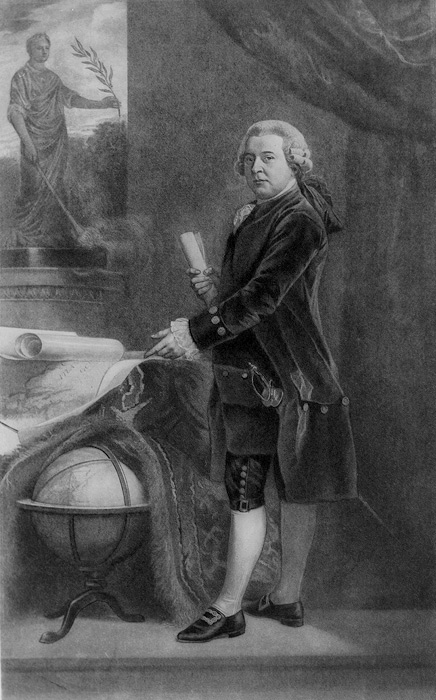
Authorizing Legislation
An act of February 28, 1800 authorized the second census of the United States, which was to include the states and territories northwest of the Ohio River and Mississippi Territory. The census was to conclude within nine calendar months of its start.
The guidelines for the 1800 enumeration followed those of the first census, with only minor alterations in the law. John Marshall, secretary of state in 1800, was the nominal head of census operations. By early 1801, however, Marshall was chief justice of the Supreme Court. James Madison, his successor as secretary of state, oversaw the final tabulations and reported population totals to Congress and the president.
Enumeration
The questionnaire provided space to separately tally free white males and females in several age categories: under 10, 10 but under 15, 16 but under 25, 25 but under 45, and over 45. Indians, slaves, and free blacks were listed in single categories undivided into age groups.
Further Information
- A wide variety of historical statistics from this and other decades is available in Historical Statistics of the United States: Colonial Times to 1970. It is available as a PDF [74.4MB] or 2-part ZIP file: Part I [52.2MB] | Part II [66.1MB].
- History and Growth of the United States Census: 1790-1890 [PDF 117MB], by Carroll D. Wright and William C. Hunt.
Information provided from Census.gov
#BookFaceFriday “Skeleton Man” by Joseph Bruchac
This #BookFace is sure to get your blood pumping!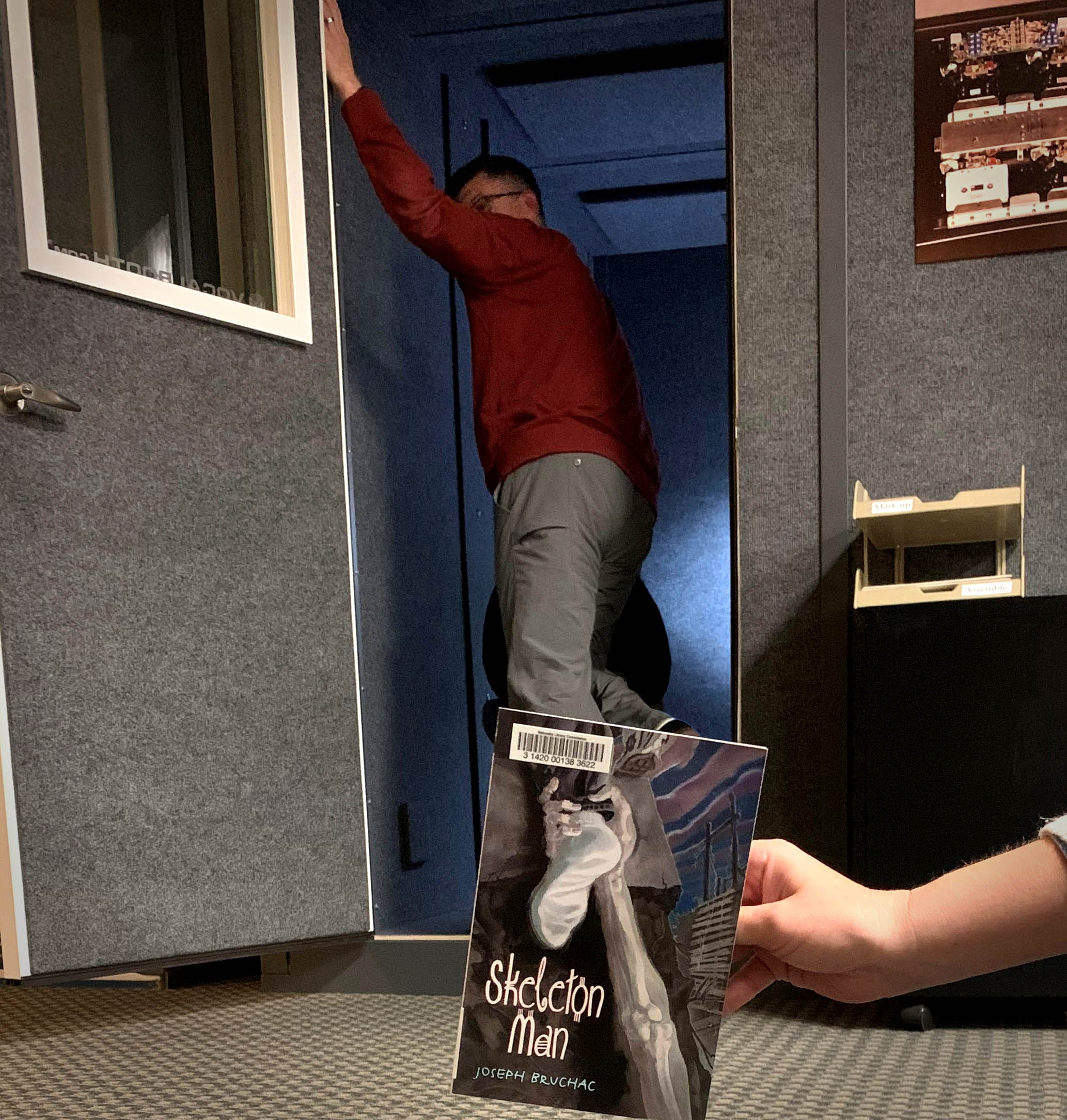
We are hitting our Halloween stride with this week’s #BookFaceFriday! “Skeleton Man” by Joseph Bruchac (HarperCollins, 2003) is a chilling middle-grade read. Full of missing parents, nightmares, and spooky stories this book club kit is a great way to learn about tribal legends. Reserve it for your youth book club today!
This week’s #BookFace model is our new TBBS Director, Gabe Kramer!
Love this #BookFace & reading? Check out our past #BookFaceFriday photos on the Nebraska Library Commission’s Facebook page!
Posted in Books & Reading, General
Tagged Book Club, Book Club Kits, Book Covers, bookface, bookfacefriday, books, Joseph Bruchac, Skeleton Man, YA books
Leave a comment
Throwback Thursday: Brainard Fire Truck
Check out the first fire truck to make its way to Brainard, Nebraska!
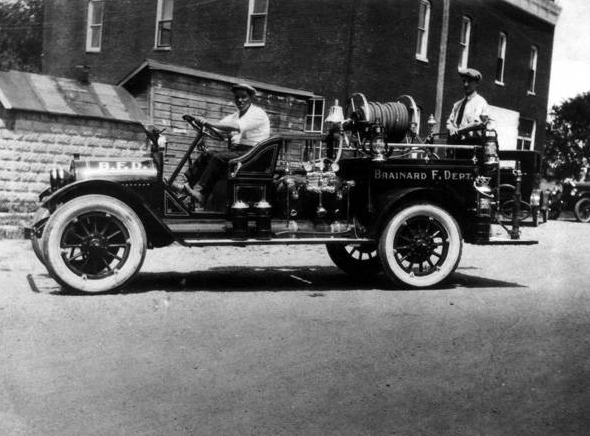
The first fire-fighting equipment to arrive in Brainard was a hose cart that was purchased in 1889. At that time, there were no fire fighters. When the fire bell rang, all the townsmen would help in any way they could.
In 1923, a meeting took place and organized a fire department. In 1925, they converted this 1924 Oldsmobile chassis with over $1,000 worth of fire-fighting equipment into the town’s first fire engine.
This image is owned by the Thorpe Opera House Foundation and published as part of the Boston Studio Project.
Interested in checking out more Nebraska history? Visit the Nebraska Memories archive to see this photo and many more!
Nebraska Memories is a cooperative project to digitize Nebraska-related historical and cultural heritage materials and make them available to researchers of all ages via the Internet. The Nebraska Memories archive is brought to you by the Nebraska Library Commission. If your institution is interested in participating in Nebraska Memories, see http://nlc.nebraska.gov/nebraskamemories/participation.aspx for more information.
The Homework Gap
The homework gap is a stubborn disparity in at-home broadband that hinders millions of students’ access to the array of online learning, collaboration, and research tools enjoyed by their better-connected peers.
The State of Nebraska recognized this disparity and in July 2018 the Governor and the Legislature created the Rural Broadband Task Force (RBTF) to research the problem and to formulate recommendations in a report initially due on November 1, 2019, and every two years thereafter. Nebraska public libraries were fortunate to be recognized by the RBTF as playing a vital role in providing free public Wi-Fi in rural communities. In particular, libraries serve K-20 students who are part of the “Homework Gap”, those who need access to the internet to complete assignments and check on their grades, but who do not have internet access away from school or campus.
Five of the six RBTF Homework Gap recommendations specifically mention public libraries and increased support to provide faster internet.
To learn more about the RBTF and their task (LB 994) to review “issues relating to availability, adoption, and affordability of broadband services in rural areas of Nebraska”, check out the main page on their website.
Please take a moment to view our Homework Gap video below. The video has sound, so make sure to turn yours on.
[youtube https://www.youtube.com/watch?v=QC-VWPKxKgU]
Posted in Books & Reading, Broadband Buzz, General, Technology
Leave a comment
Jobs Available for the 2020 Census!

The week of October 21st is Jobs Week for the 2020 Census! Anyone can apply!
The posters below can be printed out and placed anywhere in your library!
Visit 2020 Census Jobs for more information!
Posted in Census, Education & Training, General, Information Resources, Uncategorized, What's Up Doc / Govdocs
Tagged census
Leave a comment
A History of the Census in the United States : Part 1

The First Census: Census Day was August 2, 1790.
Authorizing Legislation
The first census began more than a year after the inauguration of President Washington and shortly before the second session of the first Congress ended. Congress assigned responsibility for the 1790 census to the marshals of the U.S. judicial districts under an act which, with minor modifications and extensions, governed census taking through 1840. The law required that every household be visited, that completed census schedules be posted in “two of the most public places within [each jurisdiction], there to remain for the inspection of all concerned…” and that “the aggregate amount of each description of persons” for every district be transmitted to the president.
Enumeration
The six inquiries in 1790 called for the name of the head of the family and the number of persons in each household of the following descriptions:
- Free White males of 16 years and upward (to assess the country’s industrial and military potential)
- Free White males under 16 years
- Free White females
- All other free persons
- Slaves
Under the general direction of Thomas Jefferson, the Secretary of State, marshals took the census in the original 13 States, plus the districts of Kentucky, Maine, and Vermont, and the Southwest Territory (Tennessee).
Both George Washington and Thomas Jefferson expressed skepticism over the final count, expecting a number that exceeded the 3.9 million inhabitants counted in the census.
Further Information
- A wide variety of historical statistics from this and other decades is available in Historical Statistics of the United States: Colonial Times to 1970. It is available as a PDF [74.4MB] or 2-part ZIP file: Part I [52.2MB] | Part II [66.1MB].
- Publications and population statistics from the 1790 census
- History and Growth of the United States Census: 1790-1890 [PDF 117MB], by Carroll D. Wright and William C. Hunt
Information provided from Census.gov.
#BookFaceFriday “The Ghost of Fossil Glen” by Cynthia Defelice
This #BookFace is a graveyard smash!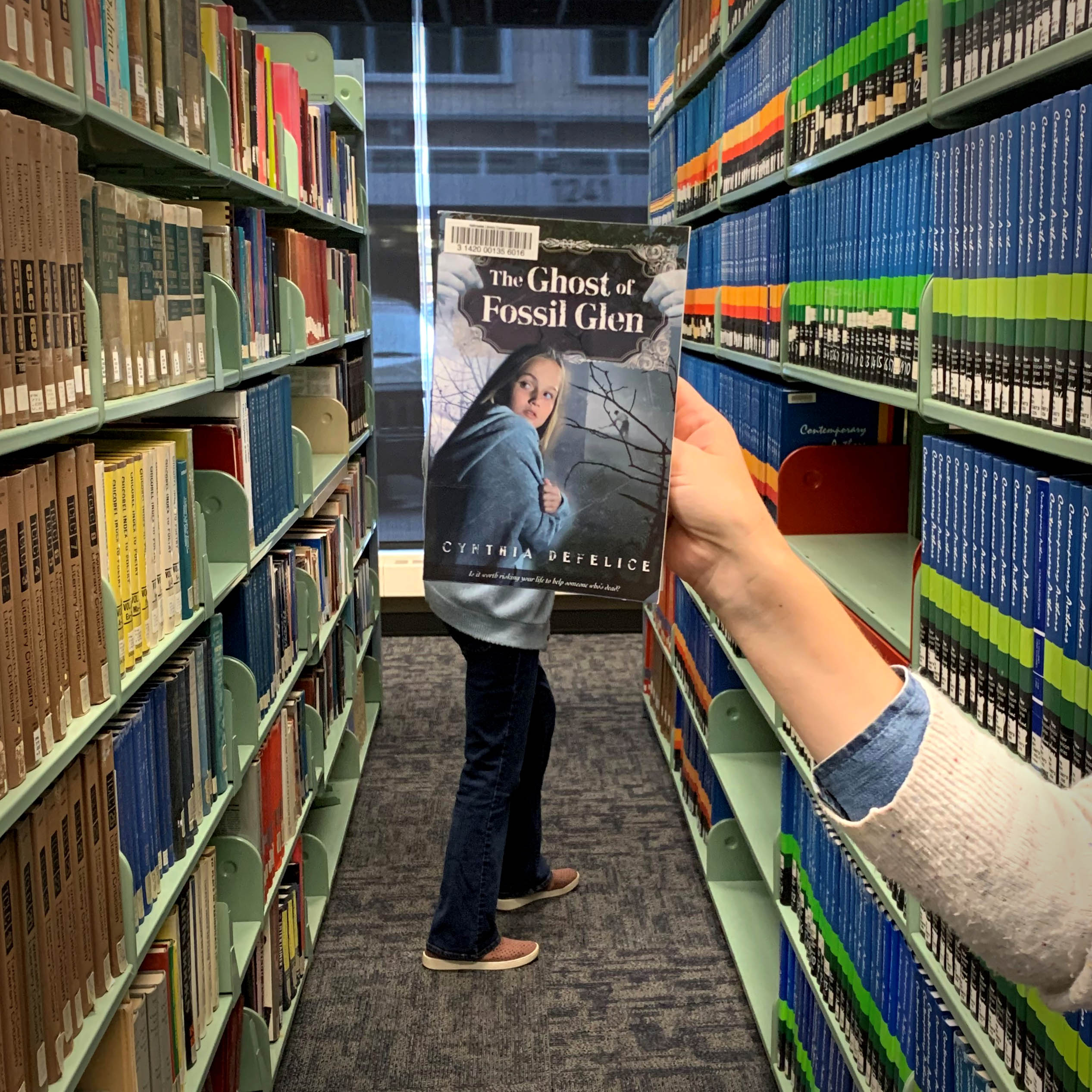
We are getting into the Halloween spirit with “The Ghost of Fossil Glen” by Cynthia Defelice (Square Fish, 2010.) It’s a 3-7 grade read with a teacher’s guide available. Just like a Nancy Drew mystery if she’d had a little paranormal help. Get it reserved for your youth book club today!
This week’s #BookFace model is Cathy Hatterman, NLC’s Acquisitions Librarian! Unfortunately, we did not have access to a graveyard so our stacks had to suffice for this week’s #BookFace photo.
Love this #BookFace & reading? Check out our past #BookFaceFriday photos on the Nebraska Library Commission’s Facebook page!
What’s Up Doc? New State Agency Publications at the Nebraska Library Commission
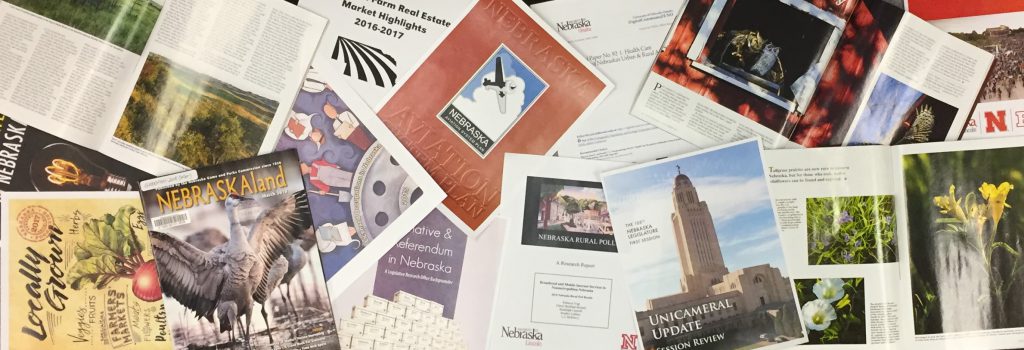
New state agency publications have been received at the Nebraska Library Commission for September 2019. Included are reports from the Nebraska Auditor of Public Accounts, the Nebraska Information Technology Commission, the Nebraska Oil and Gas Conservation Commission, the Nebraska Department of Natural Resources, and new books from the University of Nebraska Press, to name a few.
Most items, except the books from the University of Nebraska Press, are available for immediate viewing and printing by clicking on the highlighted link above, or directly in the .pdf below. You can read synopses of the books received from the University of Nebraska Press books in the September Book Briefs blogpost.
The Nebraska Legislature created the Nebraska Publications Clearinghouse in 1972, a service of the Nebraska Library Commission. Its purpose is to collect, preserve, and provide access to all public information published by Nebraska state agencies. By law (State Statutes 51-411 to 51-413) all Nebraska state agencies are required to submit their published documents to the Clearinghouse. For more information, visit the Nebraska Publications Clearinghouse page, contact Mary Sauers, Government Information Services Librarian; or contact Bonnie Henzel, State Documents Staff Assistant.
Throwback Thursday: Castelar School
This week’s #ThrowbackThursday takes a look at Nebraska education!
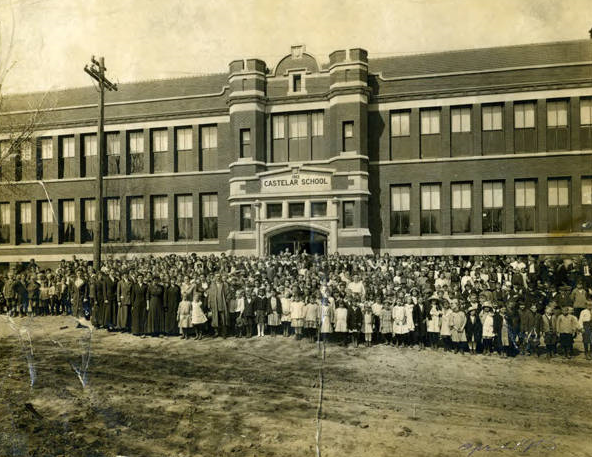
This black and white photograph shows students and teachers in front of Castelar School. Located at 18th and Castelar streets in Omaha, the school was opened in 1912. It served students from kindergarten through 8th grade.
The building pictured replaced the original structure in 1885 in the same location. The building went through multiple renovations. It was closed during the 1980s, remodeled and reopened in 1999. Currently, the school serves a new generation of South Omaha students.
This image is owned by the Educational Research Library and is part of the Omaha Public School Archive Collection.
Want to see more Nebraska-related materials? Visit the Nebraska Memories archive!
Nebraska Memories is a cooperative project to digitize Nebraska-related historical and cultural heritage materials and make them available to researchers of all ages via the Internet. The Nebraska Memories archive is brought to you by the Nebraska Library Commission. If your institution is interested in participating in Nebraska Memories, see http://nlc.nebraska.gov/nebraskamemories/participation.aspx for more information.
Pretty Sweet Tech: Dealing with Technology Frustration

Yesterday I spent two hours of my life trying to install and set up an app on my phone that is designed to control a small robot. Two hours. To install and configure an app. I went through every troubleshooting process known to (wo)man and could not get this confounded thing to work.
Throughout this process, I kept thinking it had to be something stupid I did. I forgot something. I missed a step. Maybe the device wasn’t compatible, even though it was on the recommended list. Did I mistype a password?
At the end of the day, I asked a friend to install the same app on their phone and try to control the little bot. It didn’t work. When I called customer service, I found out the app had been down for the past few hours and their servers should be back online in a few hours.

Honestly, this isn’t the first time this has happened to me. It’s a tale as old as tech. The next day I installed the app and it took about five minutes. The little robot was up and running in no time, never having known how much time I spent trying to set up its controller. It zoomed along while I stared, dumbfounded, at my smartphone. Two hours.
Then I started laughing. I vowed to myself that no technology on the planet is ever worth that mental anguish. It’s not worth frying my circuits. Sometimes technology just doesn’t work right.
It’s nothing I did. It’s nothing you did. We’re not stupid. It’s just frustration at something we cannot control. A server halfway across the country that doesn’t even know we exist. Servers live in a binary world where things are either off, or on. There is little in between. Computers don’t care. They just do what we tell them.
So next time technology doesn’t work, take a step back. Turn it off and turn it back on again. Walk away and come back later. Sometimes tech doesn’t work because we made a small mistake. Other times, technology was just poorly designed and only another computer can understand what went wrong. More often than not, the server is just out of our control.
Technology breaks. It’s a fact of life. Sometimes all it takes is one day for everything to fall into place. Don’t give up on the tools that can help.
Posted in General, Pretty Sweet Tech, Technology
Leave a comment
E-rate Story
Special thanks to those public librarians who recently completed our technology and E-rate survey. As of today, we have received over 200 responses. While we are working on analyzing the results, here’s a little 2 minute video (see below), with special thanks to the Pawnee City Public Library. FREE tools were used to create this video using Adobe Spark. If you are interested in learning more about E-rate, consider attending one of the upcoming workshops:
October 21, 2019 – Columbus (Central Community College)
October 28, 2019 – Grand Island Public Library
November 5 – Online via GoToWebinar
The video has sound, so make sure to turn yours on. Here you go:
[youtube https://www.youtube.com/watch?v=tZr3hWzA3ME&w=560&h=315]
#BookFaceFriday “Maisie Dobbs” by Jacqueline Winspear
Hey, #BookFace fans, you can stand under my umbrella. 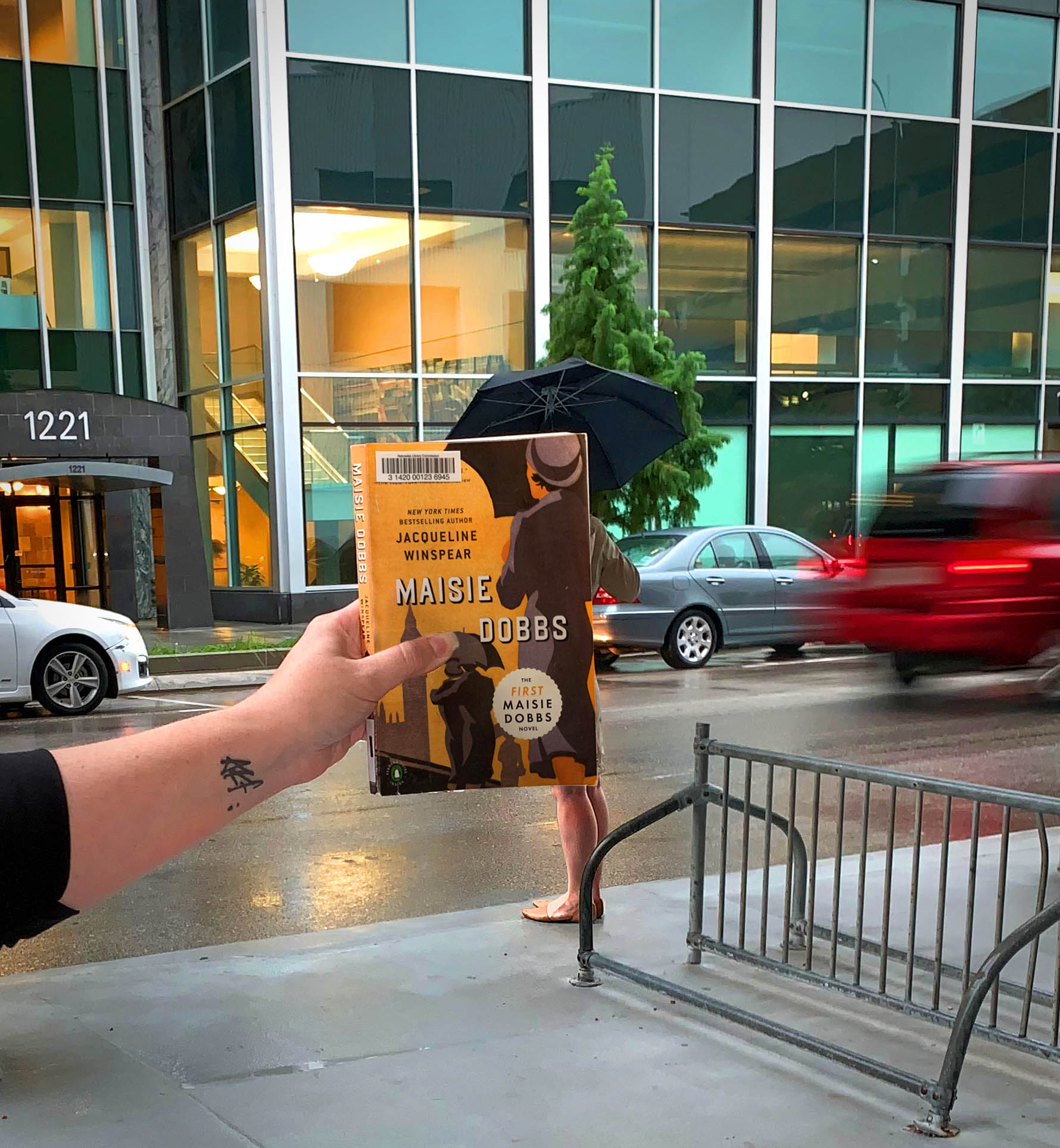
We took advantage of yet another rainy day for this week’s #BookFaceFriday! “Maisie Dobbs” by Jacqueline Winspear (Soho Crime; 10th Anniversary ed. edition, 2014) is the first novel in what is now a series of fifteen books, 2 in the NLC Book Club collection! These well written, historical fiction novels begin in 1929 and revolve around the heroine’s newly opened private eye business. Fans from Veronica Mars to Downton Abbey will be able to appreciate this mystery series.
Love this #BookFace & reading? Check out our past #BookFaceFriday photos on the Nebraska Library Commission’s Facebook page!
Posted in Books & Reading, General
Tagged Book Club, Book Club Kits, Book Covers, bookface, bookfacefriday, books, Jacqueline Winspear, Maisie Dobbs
Leave a comment
Throwback Thursday: Taking it Easy
Take it easy, it’s #ThrowbackThursday!
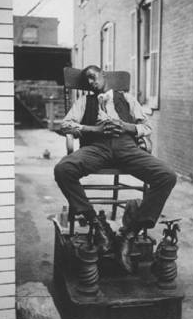
This black and white photograph was taken by John Nelson during the early 1900s. Nelson’s photographs tell the story of small town life in Nebraska during the first decades of the twentieth century. His subjects included local businesses, community activities, and early automobiles.
This photo is published and owned by History Nebraska.
Interested in Nebraska history? Check out Nebraska Memories for more Nebraska-related materials.
Nebraska Memories is a cooperative project to digitize Nebraska-related historical and cultural heritage materials and make them available to researchers of all ages via the Internet. The Nebraska Memories archive is brought to you by the Nebraska Library Commission. If your institution is interested in participating in Nebraska Memories, see http://nlc.nebraska.gov/nebraskamemories/participation.aspx for more information.
#BookFaceFriday “Alias Grace” by Margaret Atwood
Is this #BookFace a Femme Fatale or Innocent Maiden?!
“Alias Grace” by Margaret Atwood (Bloomsbury Publishing, 2017) is just one of several Atwood works in the NLC Book Club collection! Gear up for her new novel with more than a TV marathon, reserve any of her past works for your book club today.
This week’s #BookFace model is our NLC Commissioner Debby Whitehill Bloom! She was reappointed in 2018 to a second three-year term and is the current Commission Chair.
Love this #BookFace & reading? Check out our past #BookFaceFriday photos on the Nebraska Library Commission’s Facebook page!
Posted in Books & Reading, General
Tagged Alias Grace, Book Club, Book Club Kits, Book Covers, bookface, bookfacefriday, books, Margaret Atwood
Leave a comment
Friday Reads: The Bookshop on the Corner

This book strikes fear into the hearts of book-loving librarians everywhere. In The Bookshop on the Corner, Jenny Colgan captures the literary heart and soul of the true bibliophile. Nina Redmond is a heroine who lives for books. Her flat is filled with tumbling stacks of books she rescued from garage sales, countless rounds of weeding in the library, and bookshops. What’s there to be afraid of when you live with your head in a book?
Trigger Warning: A library closes and is taken over by a media resource center in this book. There. I said it. If you can’t handle that brand of pain, please don’t touch this book. In the first chapter of the book, the question is posed: “What would you do if you weren’t a librarian? What are your dreams?”. What if librarianship was no longer part of your identity? It is the kind of question that can make a heart stop beating mid-sentence.
However, if you can take it, there is a literary light at the end of the tunnel. This is the story of how Nina finds a way to strike out on her own to keep her love of books alive and well. By bringing books to a small Scottish town in the middle of nowhere, she maintains her book-loving sanity and discovers a new love for life. In many ways.
Read this book to uncover the state of libraries everywhere. This is set in England and Scotland, but the tides are shifting for libraries everywhere. Find out how libraries can maintain a bookish wonder while adapting to a computer and media-centered world.
I may be a technology librarian personally, but might I just say: long live books! My house is filled with stacks of books. It’s where I go when I don’t want to touch technology. It’s where I go to explore new worlds and see life from different perspectives.
Technology is awesome, but books are my first love. So please, go hug your favorite book. Flip through the well-worn pages and inhale the decadent fragrance known only to book-lovers. Then pick up a new book.
Throwback Thursday: Nebraska in the fall
“Have you ever been in Nebraska in the fall?”
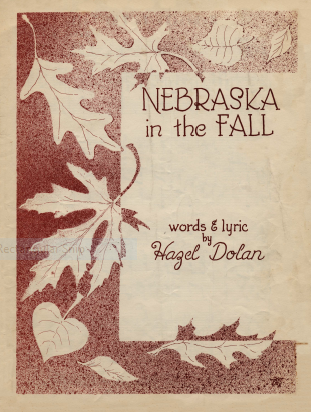
Fall is officially here and we thought this piece of sheet music would be perfect for this week’s #ThrowbackThursday! “Nebraska in the fall” was written in 1959 by Hazel Dolan of Louisville, Nebraska.
“Have you ever been in Nebraska in the fall?
Down a country road in Nebraska in the fall?
When the autumn leaves have turned to red and gold and flowers in the gardens are lovely to behold!
Have you seen the cornland when Harvest comes along?
Have you heard the blackbird’s farewell song?
Blue skies! Purple haze! Indian summer days!
Best place of all! Nebraska in the fall!”
This piece is provided and owned by the Polley Music Library. Over 250 pieces of Nebraska sheet music are available through the Nebraska Memories databases, as well as concert programs, manuscripts, theatre programs, photographs, and other Nebraska memorabilia which features an element of music. Searchers can also listen to a dozen performances of selections from this music collection performed by local musicians.
Interested in Nebraska history? Check out the Nebraska Memories archive to see more Nebraska-related materials!
Nebraska Memories is a cooperative project to digitize Nebraska-related historical and cultural heritage materials and make them available to researchers of all ages via the Internet. The Nebraska Memories archive is brought to you by the Nebraska Library Commission. If your institution is interested in participating in Nebraska Memories, see http://nlc.nebraska.gov/nebraskamemories/participation.aspx for more information.
Pretty Sweet Tech: Easy Makerspace Projects
Every library should have a handful of quick and easy makerspace projects on hand. Here’s a quick list with resources for your reference:
Paper Circuits: A piece of paper, some copper conductive tape, a small battery, printable templates, and an LED light bulb is all you need to set up this project. Go to Makerspaces.com for paper circuit kits and instructions.
SparkFun also has kits and downloadable templates available.
Marble Run: Don’t lose your marbles! Just grab some craft sticks and a cardboard box to set up this fun marble maze. Frugal Fun for Boys and Girls has instructions and pictures.
Pom Pom Drop: Collect toilet paper and paper towel rolls, then grab some colorful tape and a cheap pom pom ball to make this cool project from Coffee Cups and Crayons.
Newspaper Projects: If you have some newspaper to recycle, try upcycling in these projects from Edventures with Kids!
Cardboard Loom: Try your hand at weaving with this cardboard loom from Instructables.
Microwave Ivory Soap: When in doubt, microwave your Ivory soap and watch it grow.
Check out these projects, then peruse the other projects available on these sites to find some quick and easy projects for the kids in your library!
Posted in General, Pretty Sweet Tech, Technology
Tagged Pretty Sweet Tech, stem, technology
Leave a comment
Book Briefs: New University of Nebraska Press Books at the Nebraska Publications Clearinghouse
 The Nebraska Publications Clearinghouse receives documents every month from all Nebraska state agencies, including the University of Nebraska Press (UNP). Each month we will be showcasing the UNP books that the Clearinghouse receives. UNP books, as well as all Nebraska state documents, are available for checkout by libraries and librarians, for their patrons, in Nebraska.
The Nebraska Publications Clearinghouse receives documents every month from all Nebraska state agencies, including the University of Nebraska Press (UNP). Each month we will be showcasing the UNP books that the Clearinghouse receives. UNP books, as well as all Nebraska state documents, are available for checkout by libraries and librarians, for their patrons, in Nebraska.
Here are the UNP books the Clearinghouse received in September:
 An Army in Crisis : Social Conflict and the U.. Army in Germany, 1968-1975 Alexander Vazansky
An Army in Crisis : Social Conflict and the U.. Army in Germany, 1968-1975 Alexander Vazansky
Following the decision to maintain 250,000 U.S. troops in Germany after the Allied victory in 1945, the U.S. Army had, for the most part, been a model of what a peacetime occupying army stationed in an ally’s country should be. The army had initially benefited from the positive results of U.S. foreign policy toward West Germany and the deference of the Federal Republic toward it, establishing cordial and even friendly relations with German society. By 1968, however, the disciplined military of the Allies had been replaced with rundown barracks and shabby-looking GIs, and U.S. bases in Germany had become a symbol of the army’s greatest crisis, a crisis that threatened the army’s very existence.
In An Army in Crisis Alexander Vazansky analyzes the social crisis that developed among the U.S. Army forces stationed in Germany between 1968 and 1975. This crisis was the result of shifting deployment patterns across the world during the Vietnam War; changing social and political realities of life in postwar Germany and Europe; and racial tensions, drug use, dissent, and insubordination within the U.S. Army itself, influenced by the civil rights movement, the Vietnam War, and the youth movement in the States. With particular attention to 1968, An Army in Crisis examines the changing relationships between American and German soldiers, from German deference to familiarity and fraternization, and the effects that a prolonged military presence in Germany had on American military personnel, their dependents, and the lives of Germans. Vazansky presents an innovative study of opposition and resistance within the ranks, affected by the Vietnam War and the limitations of personal freedom among the military during this era.
 Bodies Built for Game : The Prairie Schooner Anthology of Contemporary Sports Writing Edited by Natalie Diaz; Hannah Ensor, Associate Editor
Bodies Built for Game : The Prairie Schooner Anthology of Contemporary Sports Writing Edited by Natalie Diaz; Hannah Ensor, Associate Editor
Sport has always been central to the movements of both the nation-state and the people who resist that nation-state. Think of the Roman Colosseum, Jesse Owens’s four gold-medal victories in the 1936 Nazi Olympics, Kareem Abdul-Jabbar’s protest at the 1968 Olympics, and the fallout Colin Kaepernick suffered as a result of his recent protest on the sidelines of an NFL game. Sport is a place where the body and the mind are the most dangerous because they are allowed to be unified as one energy.
Bodies Built for Game brings together poems, essays, and stories that challenge our traditional ideas of sport and question the power structures that athletics enforce. What is it that drives us to athletics? What is it that makes us break our own bodies or the bodies of others as we root for these unnatural and performed victories? Featuring contributions from a diverse group of writers, including Hanif Abdurraqib, Fatimah Asghar, Reginald Dwayne Betts, Louise Erdrich, Toni Jensen, Ada Limón, Tommy Orange, Claudia Rankine, Danez Smith, and Maya Washington, this book challenges America by questioning its games.
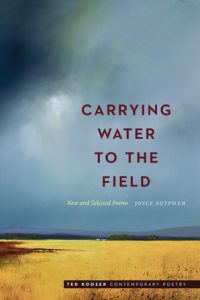 Carrying Water to the Field : New and Selected Poems Joyce Sutphen; Introduction by Ted Kooser (Series: Ted Kooser Contemporary Poetry Series)
Carrying Water to the Field : New and Selected Poems Joyce Sutphen; Introduction by Ted Kooser (Series: Ted Kooser Contemporary Poetry Series)
Joyce Sutphen’s evocations of life on a small farm, coming of age in the late 1960s, and traveling and searching for balance in a very modern world are both deeply personal and familiar. Readers from Maine to Minnesota and beyond will recognize themselves, their parents, aunts and uncles, and neighbors in these poems, which move us from delight in keen description toward something like wisdom or solace in the things of this world.
In addition to poems selected from the last twenty-five years, Carrying Water to the Field includes more than forty new poems on the themes of luck, hard work, and the ravages of time—erasures that Sutphen attempts to ameliorate with her careful attention to language and lyrical precision.
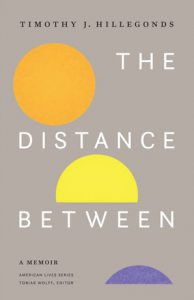 The Distance Between : A Memoir Timothy J. Hillegonds
The Distance Between : A Memoir Timothy J. Hillegonds
At eighteen years old, with no high school diploma, a growing rap sheet, and a failed relationship with his estranged father, Timothy J. Hillegonds took a one-way flight from Chicago to Colorado in hopes of leaving his mounting rage and frustration behind. His plan was simple: snowboard, hang out, live an uncomplicated life.
The Distance Between chronicles how Hillegonds’s plan went awry after he immediately jumped head first into a turbulent relationship with April, a Denny’s coworker and single mother. At once passionate and volatile, their relationship was fueled by vodka, crystal methamphetamine, and poverty—and it sometimes became violent. Mere months after moving to the mountains, when the stakes felt like they couldn’t be higher, Hillegonds learned April was pregnant with his child.
More than just a harrowing story of addiction and abuse or a simple mea culpa, The Distance Between is a finely wrought exploration of, and reckoning with, absent fathers, fatherhood, violence, adolescent rage, white male privilege, and Hillegonds’s own toxic masculinity. With nuance and urgency, The Distance Between takes readers through the grit of life on the margins while grappling with the problematic nature of one man’s existence.
 Edith Wharton, Willa Cather, and the Place of Culture Julie Olin-Ammentorp
Edith Wharton, Willa Cather, and the Place of Culture Julie Olin-Ammentorp
Edith Wharton and Willa Cather wrote many of the most enduring American novels from the first half of the twentieth century, including Wharton’s The House of Mirth, Ethan Frome, and The Age of Innocence, and Cather’s O Pioneers!, My Ántonia, and Death Comes for the Archbishop. Yet despite their perennial popularity and their status as major American novelists, Wharton (1862–1937) and Cather (1873–1947) have rarely been studied together. Indeed, critics and scholars seem to have conspired to keep them at a distance: Wharton is seen as “our literary aristocrat,” an author who chronicles the lives of the East Coast, Europe-bound elite, while Cather is considered a prairie populist who describes the lives of rugged western pioneers. These depictions, though partially valid, nonetheless rely on oversimplifications and neglect the striking and important ways the works of these two authors intersect.
The first comparative study of Edith Wharton and Willa Cather in thirty years, this book combines biographical, historical, and literary analyses with a focus on place and aesthetics to reveal Wharton’s and Cather’s parallel experiences of dislocation, their relationship to each other as writers, and the profound similarities in their theories of fiction. Julie Olin-Ammentorp provides a new assessment of the affinities between Wharton and Cather by exploring the importance of literary and geographic place in their lives and works, including the role of New York City, the American West, France, and travel. In doing so she reveals the two authors’ shared concern about the culture of place and the place of culture in the United States.
 Gothic Queer Culture : Marginalized Communities and the Ghosts of Insidious Trauma Laura Westengard (Series: Expanding Frontiers: Interdisciplinary Approaches to Studies of Women, Gender, and Sexuality)
Gothic Queer Culture : Marginalized Communities and the Ghosts of Insidious Trauma Laura Westengard (Series: Expanding Frontiers: Interdisciplinary Approaches to Studies of Women, Gender, and Sexuality)
In Gothic Queer Culture, Laura Westengard proposes that contemporary U.S. queer culture is gothic at its core. Using interdisciplinary cultural studies to examine the gothicism in queer art, literature, and thought—including ghosts embedded in queer theory, shadowy crypts in lesbian pulp fiction, monstrosity and cannibalism in AIDS poetry, and sadomasochism in queer performance—Westengard argues that during the twentieth and twenty-first centuries a queer culture has emerged that challenges and responds to traumatic marginalization by creating a distinctly gothic aesthetic.
Gothic Queer Culture examines the material effects of marginalization, exclusion, and violence and explains why discourse around the complexities of genders and sexualities repeatedly returns to the gothic. Westengard places this queer knowledge production within a larger framework of gothic queer culture, which inherently includes theoretical texts, art, literature, performance, and popular culture.
By analyzing queer knowledge production alongside other forms of queer culture, Gothic Queer Culture enters into the most current conversations on the state of gender and sexuality, especially debates surrounding negativity, anti-relationalism, assimilation, and neoliberalism. It provides a framework for understanding these debates in the context of a distinctly gothic cultural mode that acknowledges violence and insidious trauma, depathologizes the association between trauma and queerness, and offers a rich counterhegemonic cultural aesthetic through the circulation of gothic tropes.
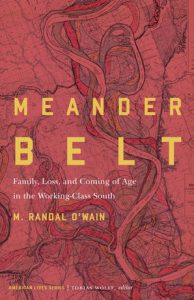 Meander Belt : Family, Loss, and Coming of Age in the Working-Class South M. Randal O’Wain (Series: American Lives)
Meander Belt : Family, Loss, and Coming of Age in the Working-Class South M. Randal O’Wain (Series: American Lives)
In Meander Belt M. Randal O’Wain offers a reflection on how a working-class boy from Memphis, Tennessee, came to fall in love with language, reading, writing, and the larger world outside of the American South. This memoir examines what it means for the son of a carpenter to value mental rather than physical labor and what this does to his relationship with his family, whose livelihood and sensibility are decidedly blue collar. Straining the father-son bond further, O’Wain leaves home to find a life outside Memphis, roaming from place to place, finding odd jobs, and touring with his band. From memory and observation, O’Wain assembles a subtle and spare portrait of his roots, family, and ultimately discovers that his working-class upbringing is not so antithetical to the man he has become.
 Salvific Manhood : James Baldwin’s Novelization of Male Intimacy Ernest L. Gibson III (Series: Expanding Frontiers: Interdisciplinary Approaches to Studies of Women, Gender, and Sexuality)
Salvific Manhood : James Baldwin’s Novelization of Male Intimacy Ernest L. Gibson III (Series: Expanding Frontiers: Interdisciplinary Approaches to Studies of Women, Gender, and Sexuality)
Salvific Manhood foregrounds the radical power of male intimacy and vulnerability in surveying each of James Baldwin’s six novels. Asserting that manhood and masculinity hold the potential for both tragedy and salvation, Ernest L. Gibson III highlights the complex and difficult emotional choices Baldwin’s men must make within their varied lives, relationships, and experiences. In Salvific Manhood, Gibson offers a new and compelling way to understand the hidden connections between Baldwin’s novels. Thematically daring and theoretically provocative, he presents a queering of salvation, a nuanced approach that views redemption through the lenses of gender and sexuality.
Exploring how fraternal crises develop out of sociopolitical forces and conditions, Salvific Manhood theorizes a spatiality of manhood, where spaces in between men are erased through expressions of intimacy and love. Positioned at the intersections of literary criticism, queer studies, and male studies, Gibson deconstructs Baldwin’s wrestling with familial love, American identity, suicide, art, incarceration, and memory by magnifying the potent idea of salvific manhood. Ultimately, Salvific Manhood calls for an alternate reading of Baldwin’s novels, introducing new theories for understanding the intricacies of African American manhood and American identity, all within a space where the presence of tragedy can give way to the possibility of salvation.
**All synopses courtesy of University of Nebraska Press (https://www.nebraskapress.unl.edu/)
#BookFaceFriday “The Boy in the Black Suit”
Everybody’s crazy for a sharp-dressed #BookFace!
“The Boy in the Black Suit” by Jason Reynolds (Atheneum Books for Young Readers, 2015) is the 2019 One Book for Nebraska Teens selection and a part of the NLC Book Club collection. This excellent YA novel is also a 2016 Coretta Scott King Author Honor book. You can reserve this kit today for your youth book club!
This week’s #BookFace model is our newest Commissioner Vernon J. Davis! He began his three-year term as Commissioner this July after his appointment by Governor Pete Ricketts. Welcome, Vernon!
Love this #BookFace & reading? Check out our past #BookFaceFriday photos on the Nebraska Library Commission’s Facebook page!
Posted in Books & Reading, General
Tagged Book Club, Book Club Kits, Book Covers, bookface, bookfacefriday, books, Jason Reynolds, The Boy in the Black Suit
Leave a comment

